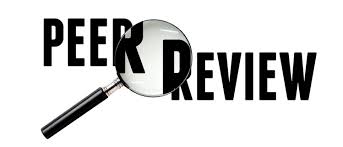 What is peer review?
What is peer review?
When we talk about “peer review” and “independent review” and “internal review” and “external review” – what are we talking about, exactly? How does it apply to various individuals in a healthcare organization? What is it that we are reviewing?
In a healthcare or hospital setting, peer review is the means by which individual physicians are assessed for compliance with industry set standards of performance. There are, of course, many avenues through which a physician can be assessed, and they are not mutually exclusive. Many times throughout their career they are apt to be assessed by the organization they work for, as well as by external auditors who are contracted by the healthcare organization to perform a review. In addition, and perhaps more novel to the healthcare scene, is the concept of peer review. In peer review, physicians assess one another for competency and compliance with industry standards.
Who can ask for peer review?
Peer review can be requested by the physicians themselves, the patients they treat or the insurers who are responsible for paying them. Certainly peer review can be requested in light of something unsavory, like a patient thinking that the wrong care was rendered, or a payer questioning a physician’s justification for a specific treatment, but it is also acceptable and, in fact, encouraged for peer review to occur on a semi-regular basis just as a safety measure. The idea being that potential areas of weakness and future trouble could be identified early and remedied. Prevention, as with most things in healthcare, is key.
Where did peer review start?
Believe it or not, peer review is actually not a new concept to medicine at all. The first documented peer review process was found in the text, The Ethics of the Physician, which was a foundational text of the medieval Islamic world. It was a pretty basic system: doctors needed to keep notes and then, senior physicians with more experience would review them to make sure everyone’s performance was up to par. This process often uncovered negative findings that were grounds of lawsuits – early cases of what we call in modern times medical malpractice – and therefore there was a sense of accountability for physicians.
Who are the reviewers?
In the modern world, the governing body that determines that the standards of care are that physicians are examined against depends on where the physician practices. The Centers for Medicare and Medicaid, of course, provides an array of standards that all healthcare professionals must comply with, but on a much smaller scale, each individual healthcare system, each hospital and even each department also develops standards of care and performance expectations that doctors are measured against daily.
Peer review and quality.
Healthcare is an industry that perhaps has even surpassed car manufacturing in concern with quality measures. And it should be. After all, we’re dealing with human beings, not cars. Peer review often concerns itself with peering closely at quality measures, compliance and safety. Patients are already vulnerable when they enter the hospital, due to illness or injury, so it is everyone’s concern in healthcare to be mindful of what areas of weakness within an organization could be influencing patient outcomes in a negative way. By utilizing peer review, and all methods of review both external and internal, there are suddenly multiple perspectives by which a situation, whether positive or negative, can be evaluated. There are also multiple causative factors in any event, and identifying them all is key if it is to be replicated – in the case of good outcomes- or avoid, in the case of negative outcomes.
Peer review and root cause analysis.
In the case of negative outcomes, root cause analysis is most often employed to identify exactly what went wrong – and develop strategies and safeguards to prevent it happening in the future. It’s not enough to identify the problem through root cause analysis; healthcare organizations are also expected to develop prevention, and show that they will put the necessary effort forward to prevent the outcome from repeating itself.
When it comes to forming the committees responsible for reviewing practices, procedures and physicians, there is no magic formula. Often, the committees are as individualized and unique as the patients entering a hospital on a given day. At first blush, this may not seem desirable, but the having reviewers from multiple backgrounds, experience and education is essential to the efficacy of peer review. If it were homogenous, than there would be criticism of a single-minded perspective that is not prepared to encompass all elements of a particular situation, and approach it holistically.
Peer review and abuse.
What’s important to note, though, is that peer review is never intended to be an opportunity for anyone who is in the privileged reviewing position to make personal attacks on a doctor. Within the structure of peer review, it is never appropriate to bring a doctor’s personal life into play. The American Medical Association has studied, in fact, the reported instances of abuse of the peer review system and concluded that while it is easy for claims to be made, the true number of abuse cases is extraordinarily rare.
All in all, peer review is an excellent tool for healthcare organizations and physicians alike to keep tabs on progress and identify areas of weakness before they become irreparable kinks.





